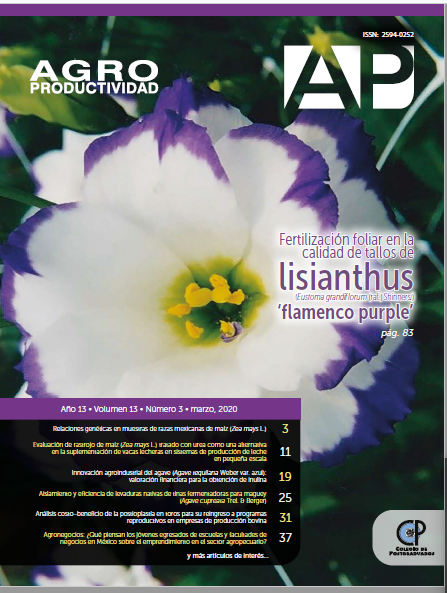Enfoque SIAL para implementar un sello de calidad en la tuna orgánica rojo vigor (Opuntia ficus-indica L. Mill.)
Main Article Content
Keywords
territory, quality certification seals, organic production.
Abstract
Objective: to analyze from the SIAL approach the territories of Chapulco and San Sebastián Villanueva in Puebla, Mexico, to determine the feasibility of obtaining a quality seal for red vigor tuna (Opuntia ficus-indica L. Mill.), of organic production.
Design/methodology/approach: using the SIAL approach, four criteria were determined in the delimitation of the territory, which were: physical aspects, local history and reputation of the product, local practices and location of the producers. Likewise, the attributes of the territory in relation to the tuna product were identified, from the producers' perspective, through participatory workshops.
Results: both territories have edaphoclimatic conditions for tuna farming and a historical trajectory dating back to pre-Hispanic times, generationally inherited know-how and they are collectively organized. However, the cultivation of red vigor organic tuna in San Sebastián is a role model for other localities and States, since it has developed its own technology based on experience and has had greater organizational growth.
Limitations on study/implications: due to the organizational dynamics in the Chapulco territory, the process of obtaining the Fair Trade quality seal may be delayed since they do not have strong institutional links.
Findings/conclusions: it is possible to manage a Denomination of Origin for San Sebastián Villanueva, because it has been possible to integrate the links of the productive chain. In the case of Chapulco, the Fair Trade Seal is suggested due to the territorial and social dynamics that this territory presents

